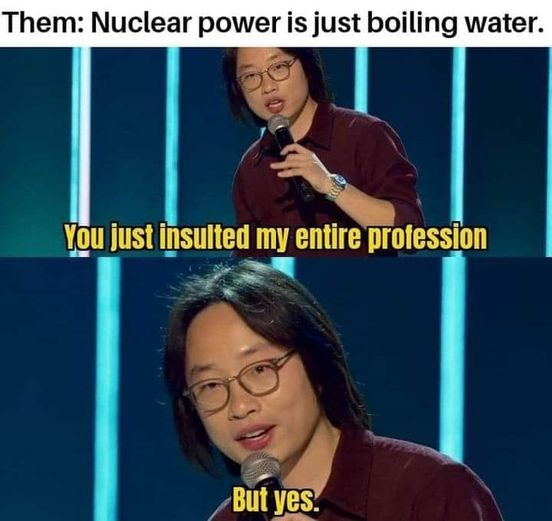Sheng Wang is hilarious! Seriously, if you like comedy then watch his stuff
Science Memes
Welcome to c/science_memes @ Mander.xyz!
A place for majestic STEMLORD peacocking, as well as memes about the realities of working in a lab.

Rules
- Don't throw mud. Behave like an intellectual and remember the human.
- Keep it rooted (on topic).
- No spam.
- Infographics welcome, get schooled.
This is a science community. We use the Dawkins definition of meme.
Research Committee
Other Mander Communities
Science and Research
Biology and Life Sciences
- !abiogenesis@mander.xyz
- !animal-behavior@mander.xyz
- !anthropology@mander.xyz
- !arachnology@mander.xyz
- !balconygardening@slrpnk.net
- !biodiversity@mander.xyz
- !biology@mander.xyz
- !biophysics@mander.xyz
- !botany@mander.xyz
- !ecology@mander.xyz
- !entomology@mander.xyz
- !fermentation@mander.xyz
- !herpetology@mander.xyz
- !houseplants@mander.xyz
- !medicine@mander.xyz
- !microscopy@mander.xyz
- !mycology@mander.xyz
- !nudibranchs@mander.xyz
- !nutrition@mander.xyz
- !palaeoecology@mander.xyz
- !palaeontology@mander.xyz
- !photosynthesis@mander.xyz
- !plantid@mander.xyz
- !plants@mander.xyz
- !reptiles and amphibians@mander.xyz
Physical Sciences
- !astronomy@mander.xyz
- !chemistry@mander.xyz
- !earthscience@mander.xyz
- !geography@mander.xyz
- !geospatial@mander.xyz
- !nuclear@mander.xyz
- !physics@mander.xyz
- !quantum-computing@mander.xyz
- !spectroscopy@mander.xyz
Humanities and Social Sciences
Practical and Applied Sciences
- !exercise-and sports-science@mander.xyz
- !gardening@mander.xyz
- !self sufficiency@mander.xyz
- !soilscience@slrpnk.net
- !terrariums@mander.xyz
- !timelapse@mander.xyz
Memes
Miscellaneous
And then there are thermonuclear generators
plus a side of extra spicy landfill
https://en.wikipedia.org/wiki/Hanford_Site
"safe nuclear": Between 1944 and 1971, pump systems drew as much as 75,000 US gallons per minute (4,700 L/s) of cooling water from the Columbia River to dissipate the heat produced by the reactors. Before its release into the river, the used water was held in large tanks known as retention basins for up to six hours. Longer-lived isotopes were not affected by this retention, and several terabecquerels entered the river every day. The federal government kept knowledge about these radioactive releases secret.
That's from building nuclear weapons though, not power
 actually space based nuclear uses thermoelectric
actually space based nuclear uses thermoelectric
"what if fire... But... MOAR"
The nuclear batteries small enough for handheld devices that we've been reading about recently don't use any water.
Those have been researched and tested for decades and the tech still hasn't caught on. They just don't put out enough power to be useful for much more than a clock circuit (not even enough to power a full watch, just keep the time).
I have serious doubts they're going to suddenly become viable anytime soon.
Any useful energy production from nuclear is basically just making steam to run turbines. Same with coal but you know.
